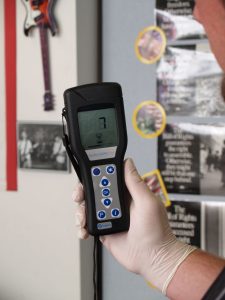 The start of a new year always brings with it reflections on the last. It’s a time when we remember our achievements and consider what changes we can make to better ourselves, both personally and professionally.
The start of a new year always brings with it reflections on the last. It’s a time when we remember our achievements and consider what changes we can make to better ourselves, both personally and professionally.
When we look back on 2020, it will most likely be with disdain. And there will certainly be elements that we want to leave in the past. The long lockdowns and social distancing to name just a few. For some, the rigours of enhanced cleaning regimes have also proved a challenge.
It’s fantastic that the industry is getting more recognition from others – hygiene remains as important as ever, particularly as we battle against an even more infectious strain of coronavirus. But what we saw throughout 2020, in certain cases, was not true cleaning.
Quite frankly, it was unbelievable to see some professional cleaning companies continuing to use a mop and bucket, and arming themselves with bottles of disinfectant, in an attempt to ward of the virus.
Despite strict hygiene remaining one of the first lines of defence against COVID-19, our industry, sadly, still seems very much stuck in the past, judging by some of the techniques that were employed last year. You would think that a global pandemic would force cleaners to ditch the ineffective, archaic methods, but astonishingly many were delivering techniques that haven’t been updated for decades.
Back in March, when the scientists announced that COVID-19 could last on surfaces for hours, even days, you could almost hear the stampede towards the disinfectant. In a misguided attempt to beat the bacteria, covering any surface in sight with this counter-productive tool.
Perhaps they are sold by the effectiveness claims that adorn the bottle, or maybe they are just blissfully unaware, but, like the losing battle of antibiotics against superbugs, disinfectants actually become increasingly ineffective over time.
Yes, the solution may kill most bacteria, but it doesn’t remove them. These dead microbes, along with any surviving ones, very much remain on the surface. And dead or alive, they serve as a food source for the next wave of bugs.
Some bacteria even produce biofilms that can effectively defend them from cleaning agents, so there is a real danger that disinfectant only increases the bacterial resistance.
And then there’s mopping. We have been calling for cleaners to ‘chop the mop’ for years, but throughout 2020 we saw cleaners attacking floors with this unhygienic technique, time and time again. It amazes me that this is even still considered cleaning. After all, the true meaning of cleaning is to remove dirt. Yet all a mop and bucket are good for is spreading soils and toxins.
There is simply no place for traditional mopping in today’s cleaning world, yet we see imagery of this method used throughout our industry, even in our trade publications, in an attempt to depict ‘cleanliness’. When it comes to mopping there is nothing hygienic about it.
In fact, scientific research, using test plates infected with organisms, has shown that ‘cleaned’ areas are instantly re-infected as the mop-head picks up soils in the bucket’s contaminated water and circulates them across around floor. Even microfibre mopping only cut bacteria levels by 51% at best, before dragging bacteria back into clean areas, resulting in an overall effectiveness of 24%.
These methods have become widely accepted as standard practice by many, but in reality, they are pretty much pointless, particularly as weapons in the COVID-19 war.
It’s time for a long-overdue shake up of the cleaning sector. We need to leave the outdated, inadequate practices firmly in the past and invest in innovative, science-led cleaning methods.
In the wake of Coronavirus, we have created a process that not only fully removes dangerous bacteria from surfaces, but protects them from re-infection. We call this the ‘Remove, Improve and Protect strategy’.
Step one is to fully remove contaminants by adding water, and the correct chemistry in the form of a pure cleaning solution. With some dwell time and agitation where necessary, high-flow fluid extraction can then be used to take away the used solution, storing it separately for disposal.
The next step is to test the effectiveness of the clean. Using the above method will greatly improve cleanliness the first time it is employed, but adenosine triphosphate (ATP) measurements taken before and after cleaning provide proof of the standard of clean, instilling confidence in the process.
The final phase of our recommended cleaning process is to protect surfaces with an antimicrobial defence with long lasting properties. If, used after following the steps above, extensive protection against pathogens can be achieved for a month on a surface.
So, if we are to make one resolution for 2021 as an industry, it should be to clean up our act. We have the opportunity to play a vital role in beating this virus, whilst demonstrating our professional standards to others. But the only way to do that is by ditching the old-school ways and eradicating germs and bacteria for good, through robust, proven practices.
To find out more about Rawlins Remove, Improve and Protect strategy, visit: https://www.rawlins.co.uk/remove-improve-protect-covid




